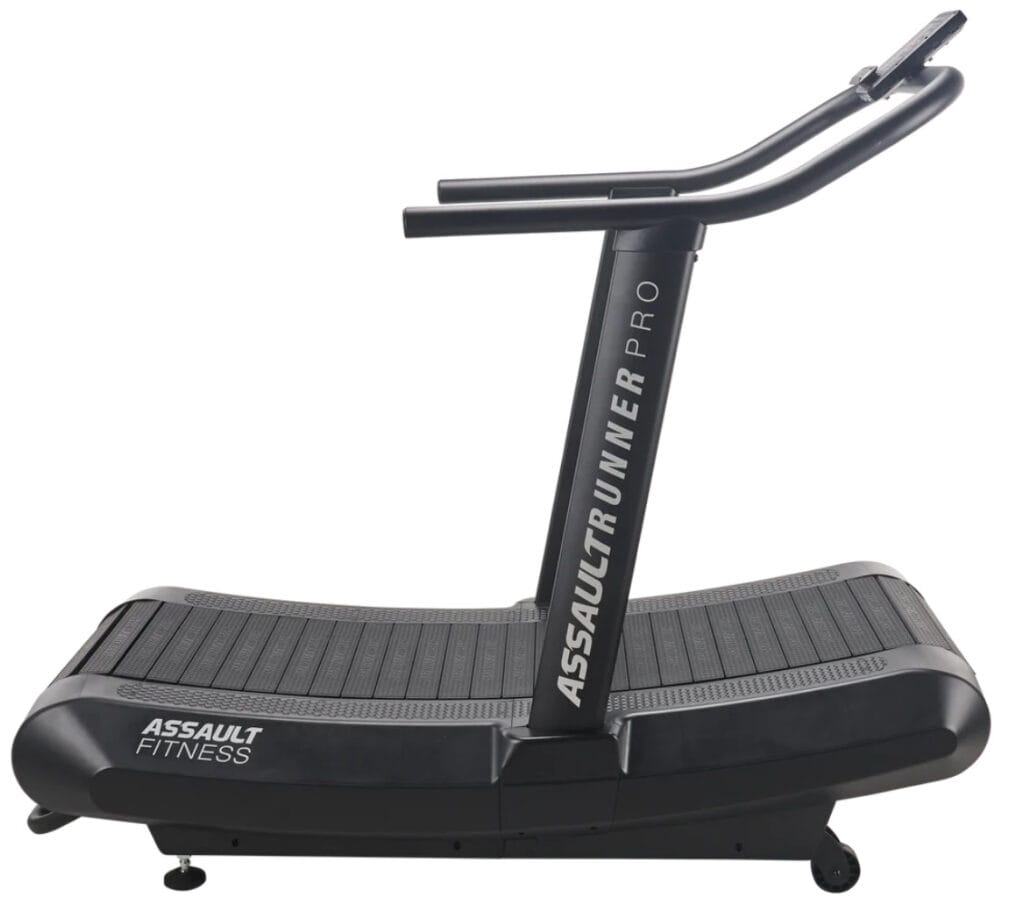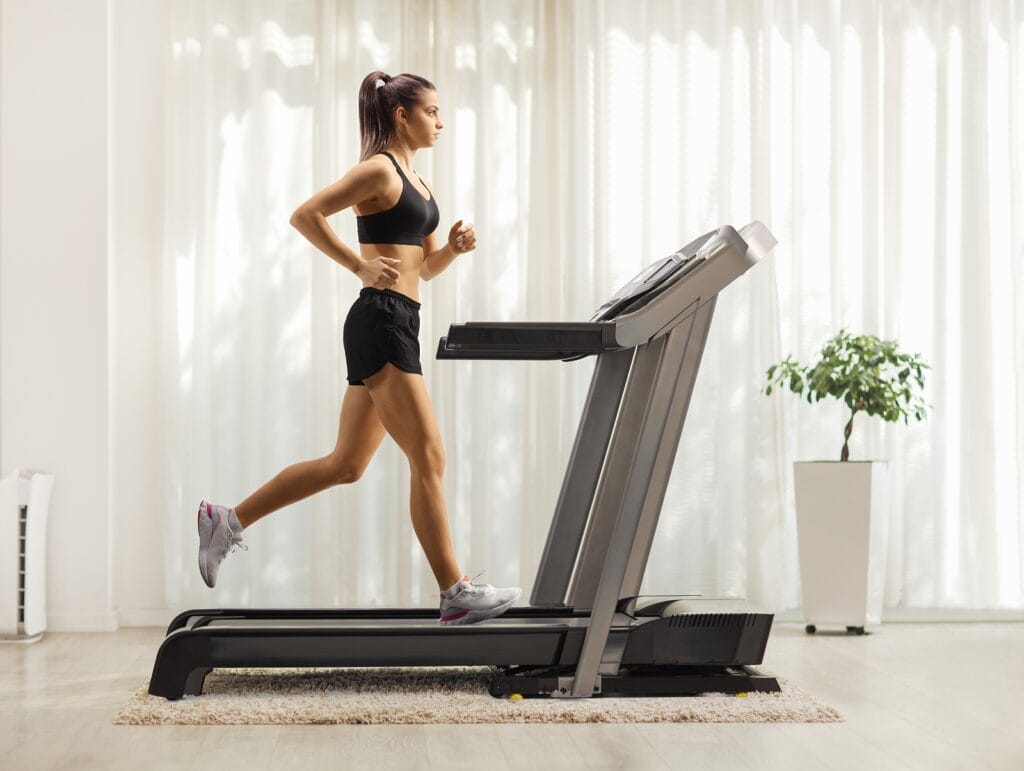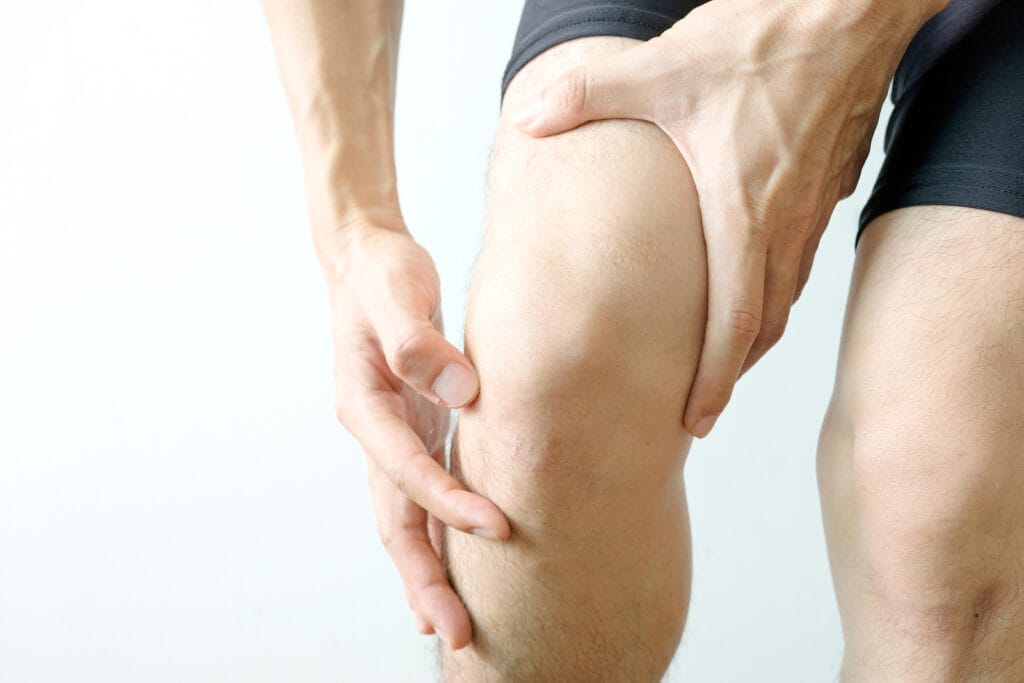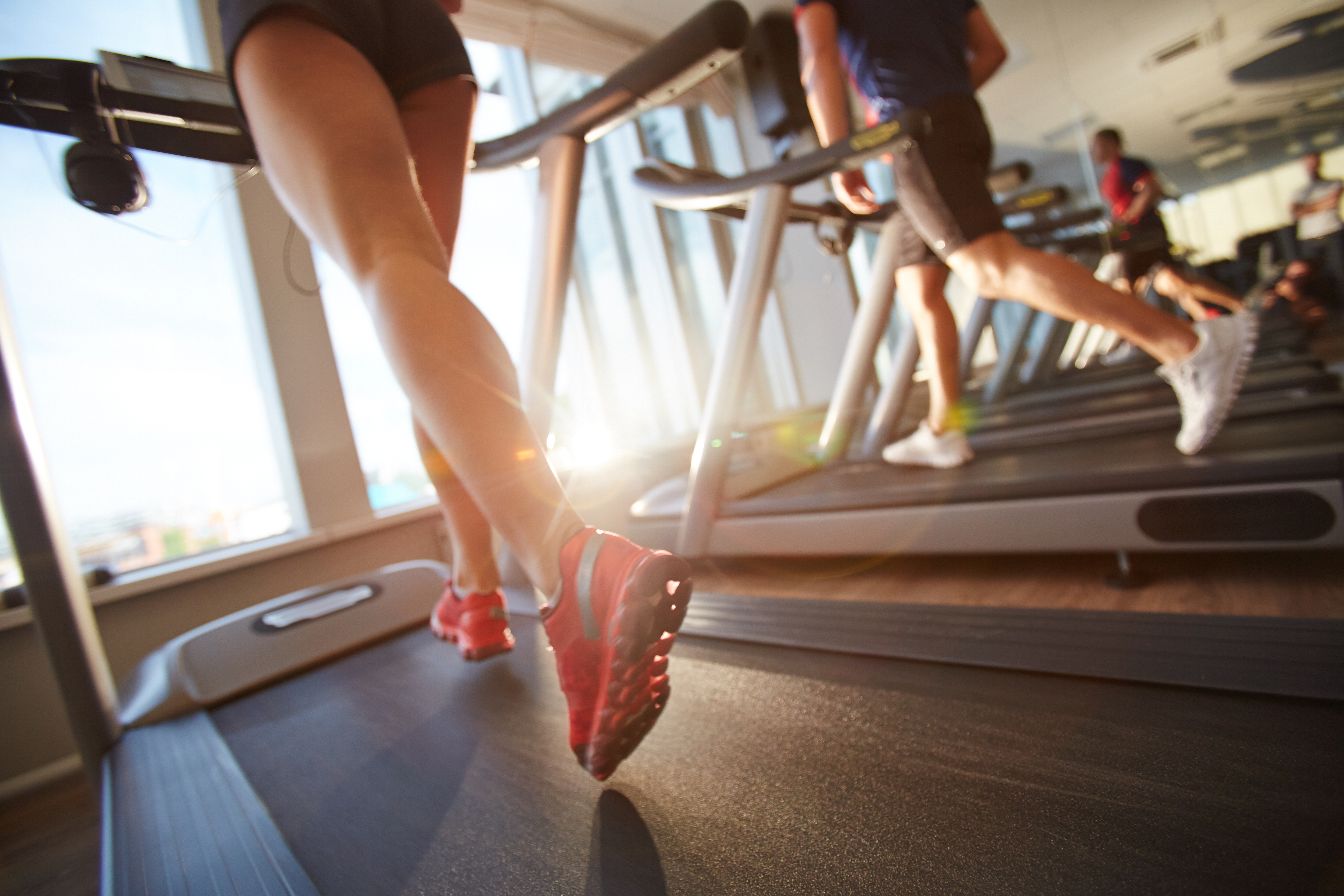
Treadmills are still a popular option when it comes to choosing a home cardio machine, but now that we have so many more options to choose from, a treadmill may not necessarily be the best choice.
Bikes, rowers, and ellipticals all have their perks, but there’s one forgotten cardio machine that’s making a big comeback in the world of home fitness…
The stair climber.
Stair climbers offer great cardiovascular workouts and can provide strengthening benefits as well and now that we have compact options to choose from, they can offer easy home access too.
Stair climbers can also be surprisingly low impact, making them a smart option for folks who may not be able to walk or jog comfortably on a treadmill.
So, if you’re looking for a great workout but aren’t sure a treadmill is what you’re looking for, I’d highly recommend considering a stair climber.
But before you decide, keep reading.
In this guide, I’ll compare treadmills and stair climbers, providing a head-to-head comparison with regards to everything you’d want to know before making a purchase.
We’re talking size, specs, cost, workouts, and more.
After reading, you’ll know which cardio machine makes more sense for your home gym.
Stair climbers can make nice alternatives to treadmills, as they can offer great cardiovascular and leg strengthening benefits while taking up less floor space. Stair climbers come in various shapes and sizes and can be surprisingly low impact as well.
| Stair Climbers | Treadmills | |
|---|---|---|
| Size | Smaller footprint | Larger footprint |
| Cost | Higher on average | Lower on average |
| Workouts | Lot of options | Lots of options |
| Calorie Burning | Good | Great (running) |
Building Leg Strength | Great | Good |
| Low Impact? | Yes | No |
| Good for Weight Loss? | Yes | Yes |
A Quick Introduction to Treadmills and Stair Climbers
If you’re reading this, I have to assume that you know what treadmills and stair climbers are to begin with, but there are still a few points worth mentioning here.
More specifically, that both treadmills and stair climbers come in many different forms.
We may think of treadmills as the classic, motorized walking and running machines that we’re used to, but there are a few different types of treadmills to choose from now.
These include:
- Affordable manual treadmills
- Slat belt manual treadmills
- Motorized treadmills
- Slat belt motorized treadmills
I’m probably missing a few variations in there, but the above categories will include the majority of treadmills out there.
What I’m calling ‘affordable manual treadmills‘ are treadmills that only cost a couple hundred bucks and are designed solely for walking.
These treadmills don’t have motors and they come with a resting incline angle to help keep the belt moving.

Slat belt manual treadmills, on the other hand, are significantly more expensive, heavier-duty, nicer machines that come with curved decks to help keep the belt moving without a motor.
And the slat belt offers a thicker, more cushiony surface to walk or run on and is often more durable.
Any treadmill that comes with a motor would be considered a motorized treadmill and these are the machines most of us are likely most aware of.
Motorized treadmills come in various shapes, sizes, and price ranges, but they all have a motor that propels the belt along the deck.
And yes, some motorized treadmills come with slat belts as well.
When choosing a treadmill, there’s a lot of stuff to consider, like motor strength, running surface size, and features, and if you’re interested in learning about this stuff, check out my full treadmill guide for more info.
Stair climbers also come in several different variations and like treadmills, they aren’t all designed the same.
Stair climbers can generally be split into 2 varieties based on the stepping motion they use: steppers and revolving stair climbers (aka ‘stair mills’).
Steppers don’t use revolving stairs like the commercial climbers you’ve likely seen, but instead usually use flywheels and magnetic resistances to provide resistance while performing a stepping motion.
Revolving stair climbers or stair mills, on the other hand, closely mimic the feel of climbing real stairs because that’s what they physically have you doing.
Steppers and stair mills come in various sizes and with various features, but in general:
- Steppers tend to be more compact
- Steppers tend to be more affordable
- Stair mills tend to provide harder workouts
ProForm’s popular HIIT Trainers are a good example of a stepper machine and the classic Stair Masters are prime examples of the traditional stair climbers.
When considering a stair climber, it’s a good idea to start with deciding on which style of machine you’d prefer and then considering things like features, warranties, budget, etc.
If you’d like more info on what to look for when shopping for a stair climber, check out my full stair climber guide for more info.
Comparing Size: Stair Climbers vs Treadmills
One of the first issues to consider before deciding on a climber or a treadmill is how much floor space you have.
Depending on the models, treadmills and stair climbers can both take up a fair amount of floor space, so if you’re dealing with a smaller workout area, it’s a good idea to grab that tape measure.
Your average home treadmill is about 6 – 7′ long, about 3′ wide, and somewhere around 5′ tall – although there are certainly much smaller models out there.
But with a footprint of roughly 7′ x 3′, your average full-size home treadmill is one of the largest cardio machines out there.
And of course you need to include some extra wiggle room around the treadmill to make sure you can actually get on/off it comfortably.
Now a lot of home treadmills these days come with folding decks, which can save you a lot of floor space when you’re not using the machine.
With the deck folded up, you can cut that footprint in half roughly, saving a good 30 – 40″ of floor space.
Stair climbers on the other hand, are surprisingly compact when compared to full size treadmills.
You average home stair climber is 4 – 5′ long, 2.5′ wide, and 5 – 6′ tall (depending on console size).
This means that stair climbers and steppers tend to take up less floor space than a full-size home treadmill.
With steppers though, you have to keep ceiling height in mind as well, but as long as you have at least 8′ ceilings, you should be fine.
And just like with a treadmill, you need to make sure you have a few extra inches of space around the stepper to make sure you can safely access it.
Analyzing Cost: Treadmills vs Stair Climbers

Floor space is important, but so is cost.
After all, if we don’t have the budget for a treadmill or stair climber, the rest is pretty arbitrary.
Luckily, both treadmills and stair climbers come in various price ranges, so if you’re interested in either, you’ll likely be able to find a model that fits your budget.
Home treadmills come in a wide range of prices, starting with your really cheap treadmills that’ll cost a couple hundred bucks to the elite commercial grade machines that cost over $10k.
But that said, most of your top home treadmills cost somewhere between $1500 – $3000.
You can get a great home treadmill for this price with great performance specs and as many features as you’d like.
Steppers and stair mills also vary greatly in terms of price, ranging from your tiny hydraulic steppers that cost under $100 to your full-size, commercial grade Stair Masters that cost $15k.
But that said, most of your top home stair climbers cost $1700 – $5k.
And when it comes to climbers, steppers are usually more affordable than the revolving stair climbers/stair mills.
So, overall, I’d say stair climbers are usually a little more expensive than treadmills.
Workouts & Burning Calories: Stair Climbers vs Treadmills
Stair climbers and treadmills can both offer great cardiovascular workouts and both also offer plenty of workout variety.
That said, in terms of workout variety, your average treadmill likely offers a few more options than your average stair climber.
With a treadmill, you can walk, jog, sprint, walk against an incline, walk backwards, side-step, and probably a few more I’m missing here.
On a climber, you can adjust your stepping speed (or resistance on a stepper), double-step, or side-step, but that’s about it.
Although some steppers (like HIIT trainers), do let you work your arms at the same time too.
And when it comes to calories burnt, it’s hard to compare because so many different variables play a role, but I’m gonna try anyway.
According to Omni Calculator, your average 150 lb person will burn about 5 calories/min walking up stairs ‘slowly’ and about 10 calories/min going up stairs ‘fast’.
They don’t give us exact steps/min for these speeds, but I’m guessing slow is quite moderate while fast is higher-intensity stepping.
If we use the ‘slow’ calculation, that means this same 150 lb person will burn roughly 150 calories while slowly climbing stairs for 30 min.
According to the same Omni Calculator, this is roughly the equivalent of that same 150 lb person walking on a treadmill at a 0% incline at 3.5 mph for 30 min.
These are both very moderate exertion levels, so there’s a lot more room for calorie burning on both machines.
Here are a few more general calculations for a 185 lb person, according to Harvard Health Publishing:
- 30 min of stair climbing burns ~252 calories
- 30 min of walking at 3.5 mph burns ~159 calories
- 30 min of running at 5 mph burns ~336 calories
Again, it’s hard to compare these activities because our calorie expenditure depends on the intensity of our exercise and our body weight.
But based on the data, I would say, generally speaking, that you can burn more calories running on a treadmill than you can using a stair climber, but a stair climber will burn more calories than walking on a treadmill.
Personally, I would say the above takeaway applies to my experience with treadmills and stair climbers.
On a stair climber, I can burn a good 350 – 375 calories in 30 minutes if I’m really getting after it, but jogging on a treadmill I can burn well over 400 calories in that same time period.

Keep in mind too, that on the treadmill, you can increase the intensity by either increasing the incline, increasing your speed, or both.
On the stair climber, you can really just increase the intensity by increasing the speed/resistance you’re stepping against.
The treadmill may win out it terms of total calorie expenditure, but when it comes to strengthening the muscles in your legs, the stair master is likely the winner.
Both cardio machines work basically every muscle from the waist down, but climbing stairs especially targets your quads and glutes (as well as calves too).
So, if firming up your legs is a goal, opting for a stair climber could make sense.
With regards to the different kinds of workouts you can do, there aren’t any real differences between treadmills and stair climbers.
You can do steady-pace, prolonged workouts, HIIT workouts, hill climbs, intervals, fat burners, and anything else you can think of on either type of machine.
And stair climbers, like treadmills, vary from model to model with regards to how many built-in workout programs and features they offer, so these all depend on the specific machine.
And with the release of the STEPR+, we now even have a streaming stair climber to choose from which gives us access to instructor-led workouts, scenic hikes, and built-in entertainment apps.
So, when it comes to workout programs, steppers can be just as diverse as treadmills.
Impact on Joints: Treadmills vs Stair Climbers

Running on a treadmill can certainly burn a lot of calories, but it can be rough on your feet and joints too.
Even if you aren’t dealing with arthritis or achy joints, the repetitive impact of landing and pushing off of the treadmill can bring on a lot of different muscular and soft tissue issues.
IT band syndrome, patellar tendonitis, plantar fasciitis… the list could go on.
Believe it or not, using a stair climber can actually be lower impact than walking or running on a treadmill, especially if you’re using a climber with lower stairs like the STEPR+.
With only 5″ high, stadium-style steps, the STEPR+ offers a lower step height, making for a gentler, more accessible climber.
But even traditional stair mills (with their 7″ high steps ) are often more comfortable on the legs than treadmills are.
One reason is likely that with a stair climber, you’re hitting each step with a bend knee and simply extending, while on a treadmill you have the heel strike with an extended knee and the push off to consider.
Of course, if you have knee pain to begin with, a stair climber might not be the best option.
If you have pain going up the stairs in your home, you’ll likely have pain exercising on a stair climber (although again, some machines like the STEPR+ mentioned above have lower steps that make ’em easier on the joints).
But if you don’t have any problems with getting up your stairs at home, you will likely be fine using a stepper.
And if you have issues with soft tissue problems, you might find a stepper to be more comfortable than a treadmill.
Stair Climbers vs Treadmills: Which is Better for Weight Loss?
Losing weight is all about burning more calories than you’re consuming, so either cardio machine can be a potent tool for helping you lose weight.
So, when it comes to which machine is better, it largely depends on what kind of workouts you prefer doing.
As shown briefly above, if you enjoy (or can at least tolerate) running, a treadmill may be the better option for weight loss because running on a treadmill tends to burn more calories than using a stair climber.
However, even climbing stairs at a moderate pace tends to burn more calories than walking, so if you hate running, you’d probably be better off with a stepper.
When it comes to walking on a treadmill against an incline, the differences between calorie burning rates narrow and depend entirely on slopes and speeds.
And keep in mind, these cardio machines are only going to help you lose weight if you actually use ’em.
If walking on an incline or jogging on a treadmill causes discomfort every time you do it, odds are you won’t be able to keep your exercise routine up for long.
Weight loss and weight management are all about consistency, so you have to find a way to exercise which is enjoyable and pain free.
As I mentioned earlier, stair climbers are usually considered to be lower impact, so if you’re dealing with irritable joints, opting for a stepper might be a better option for weight loss.
Long-story-short, when it comes to weight loss, it all depends on what kind of workouts you’re able to comfortably do.
Final Thoughts
Ok, I think that about covers it.
It really is a great time to be working out from home because we just have so many awesome fitness machines to choose from now.
And the technology and features on this equipment continues to progress every year.
When it comes to choosing between a treadmill or a stair climber, it’s all about weighing the factors mentioned above and making an educated decision based on these.
To summarize:
- Treadmills tend to take up more floor space, but stair climbers tend to cost a little more
- Treadmills are probably capable of burning more calories (if you’re running), but stair climbers are likely lower impact and more comfortable for the joints
- Both machines can burn a lot of calories and help you lose weight, so it really depends on which machine you’re more likely to use
- Both machines offer similar workout options and features
Treadmills and stair climbers work very differently, but they can both provide great workouts.
Ultimately, it boils down to personal preference because there are no wrong answers here.
I think I forgot to mention it earlier, but I did want to point out that treadmills and stair climbers both provide weight bearing exercise, meaning you’re standing and putting weight through your legs.
As weight bearing modes of exercise, both will provide the capability of burning more calories than exercise bikes, which aren’t weight bearing.
(Although if you really crank the resistance up on an indoor cycle, one could argue that that is a weight bearing exercise…)
Anyway, if you find walking or jogging on a treadmill mind-numbingly boring, you certainly have alternatives to choose from.
And if you ask me, I’d say a quality stair climber is as fine an alternative as any.




